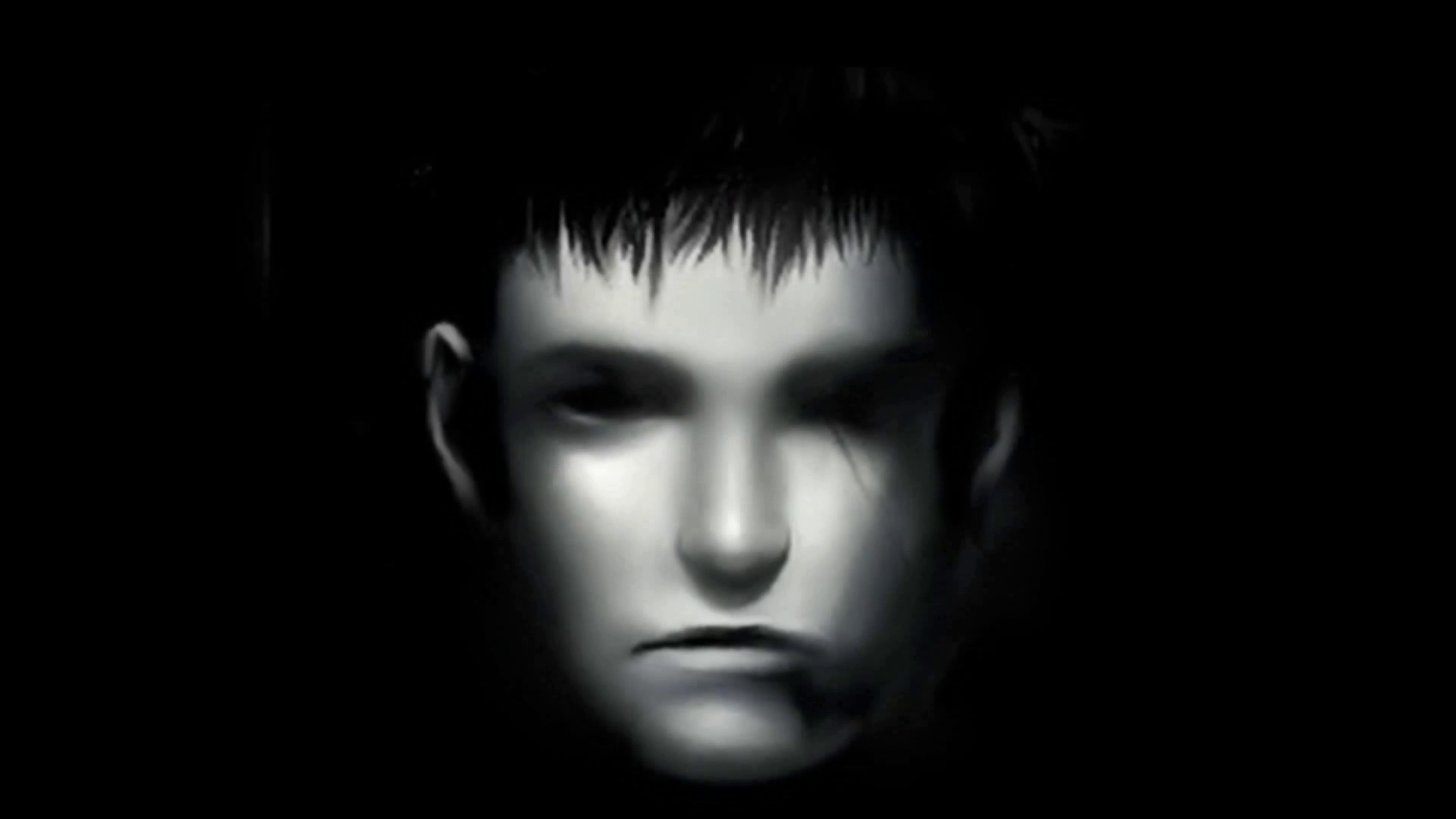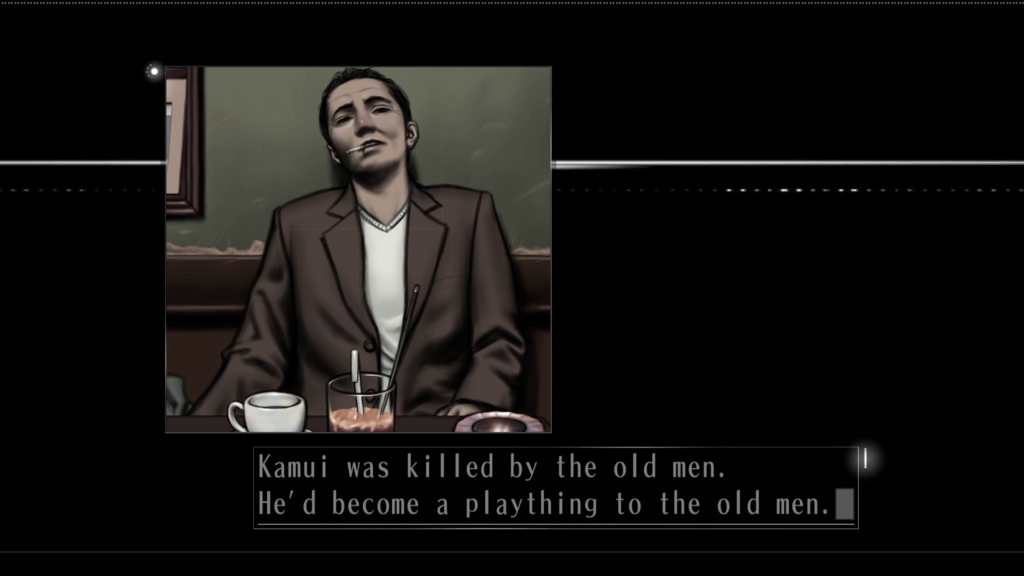Uehara, the fifth Kamui

I will refer to the fifth Kamui as simply “Uehara.” The Kamui whom Kusabi, the only witness, describes in “Danwa” is the highest, most complete set of “facts” behind the propaganda “truth” of the first Kamui. To repeat the point: “[Uehara Kamui] was no hitman. He was your average civilian, except for one thing. His eyes were silver.”
Uehara Kamui is an immortal man with no documentation. Kusabi takes this so mean he is supernatural entity, but Flower, Sun, and Rain instead implies that Uehara is just an undocumented Micronesian immigrant, and Meru calls him “an ordinary ward resident.” The chairmen of the TRO/CCO and FSO, together as one group, call Kamui to the TTV Tower in 1979. There they murder him in cold blood to steal his immortality by extracting his eyes. Kusabi describes a spectacle of politics stripped to bare combat, with the old men physically tearing each other apart until only Hachisuka Uminosuke remains to gouge out his eyes and replace them with the silver eyes of youth. Kusabi shoots Uminosuke and flees, not realizing the silver eyes will regenerate him. “Kamui was killed by the old men. He’d become a plaything to the old men.” This highest truth is treated as correct in The 25th Ward, where after sharing other Kamui narratives, Meru simply states, “This theory appears to be true.”

Recall that, in historical Japanese culture, humans could become both gods and vengeful ghosts powerful enough to threaten the stability of the nation, such as Sugawara no Michizane, who was posthumously deified to prevent his angry spirit from causing further death and destruction. If Kamui is a conscious entity spreading between bodies to carry out terrorism, then he may be the vengeful ghost of the innocent person the old men murdered in 1979.
At the end of “LifeCut,” Munakata and Kusabi engage in a final secret meeting at the Harakiri Batting Center. Munakata says, “Guess it’s like the rumors said. So Akira is the ‘Format Kamui’?” Not one of the Shelter Kids, then, Akira is Uehara, a vengeful ghost given shape. If Uminosuke stole it, this would account for the scar over Akira’s left eye: in another contradiction, the documents in the Triangle Towers maintain that Uehara Kamui only had one silver eye: his left. Kamui loses his story, his voice, to the oligarchs. And as Freeman points out, Akira shares these traits, never speaking, defined only by others, his history and identity erased with the “facts” of the Kamui Maspro. As much as the player must give a voice to the ultimate criminal and the ultimate victim, the player must do the same for Akira. He is Kamui. Of course, this is also why he, like Tokio, can interact with ghosts.

“Maybe this [Uehara Kamui],” Kusbai tells Munakata, “is the total sum of everyone else’s existence. Since so many others were sacrificed for him. There were probably many more who were never rewarded.” Screw it—everyone is Kamui. Enlightened to the extent he ever will be, Kusabi says, “There’s a spirit that resides in us all, and within that spirit is the light of possibility” (emphasis mine). This spirit is Kamui/Ayame, whether metaphorically or a literal spiritual being. So it is on us all, including the player who controls both Kamuis, to pursue the light in our spirit. Perhaps the various other Ueharas listed on Kamui Net are, in this sense, real after all. The Silver Case concludes with the logical extreme.